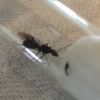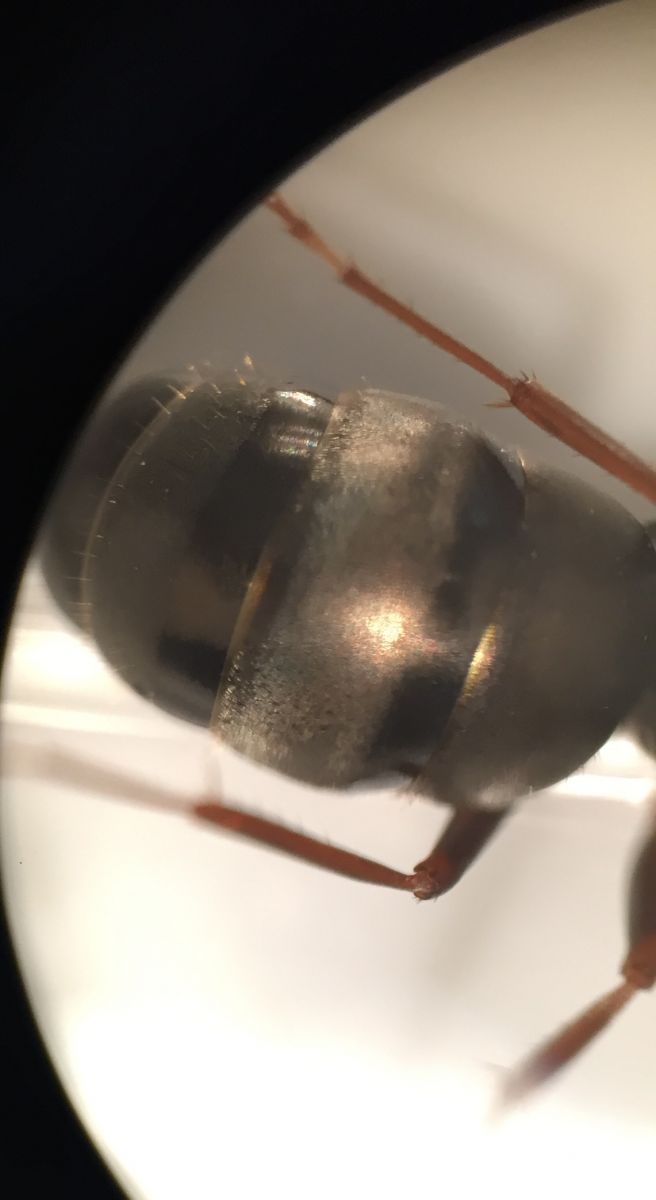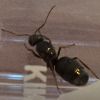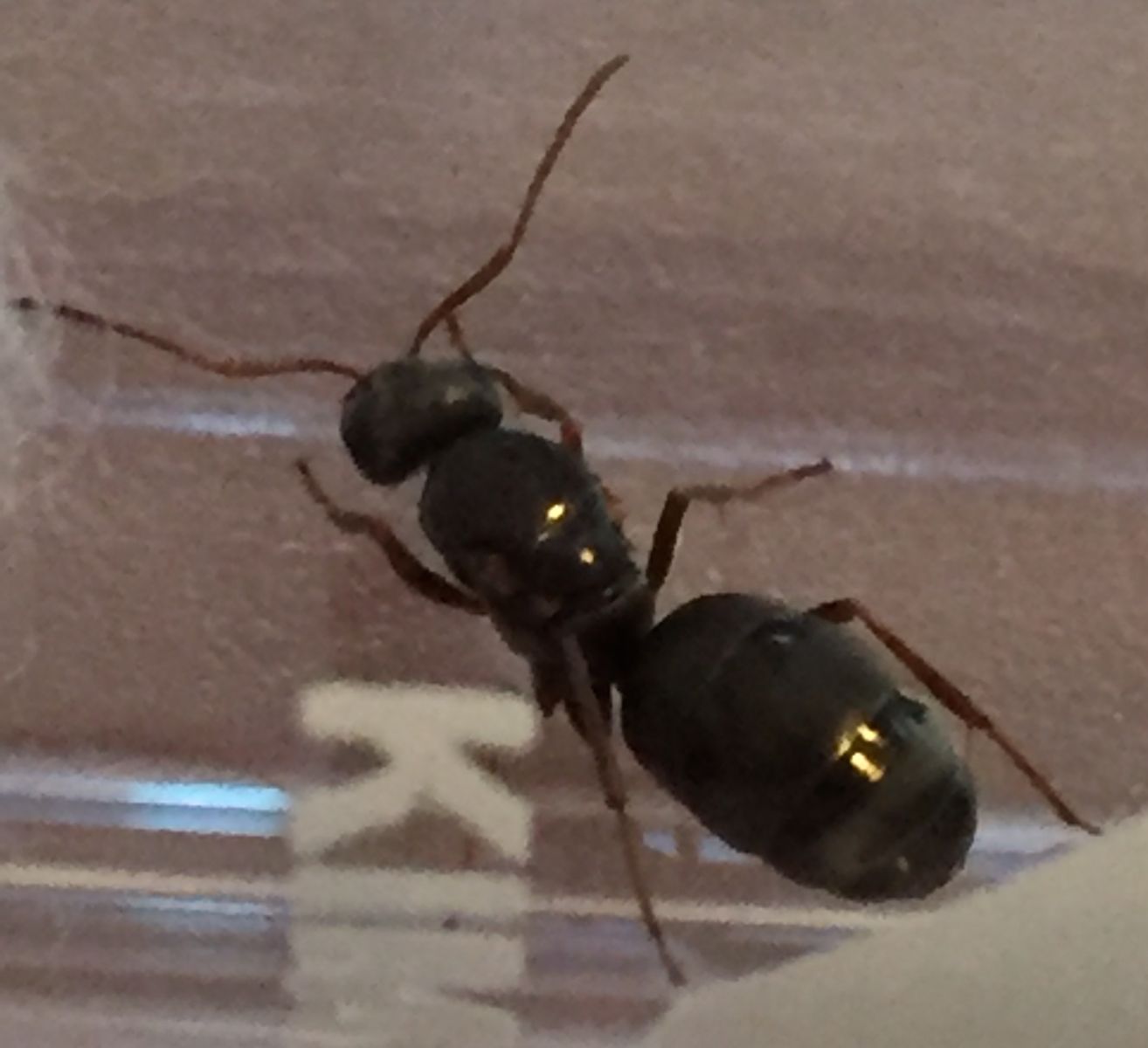Hi All
My daughter found another queen(?) today. This is our first year looking for queens and we have found 3 species so far, this being the third.Help when you have 4 kids looking for them:).
Need help IDing species and if it is a queen vs male?.
1. Location; Victoria, BC Canada Esquimalt in our driveway.
2. Date of collection: June 20th 2017 3pm. Sunny aprox 18-20 Degree Celsius. Humidity high
3. Habitat of collection: Paver driveway in city
4. Length (from head to gaster): 10mm
5. Color, hue, pattern: Black body with slightly red lags. Antenna with 11 segments. Larger eyes compared to others. Body had small gold hairs all over except head.
6. Distinguishing characteristics: None other then above
7. Distinguishing behaviour: None
8. Nest description: Unknown
Let me know what you think is species and if fully Claustral?. This one queen is smaller then the Camponotus we found in May, but twice the size of the little ants Tapinoma sessile that we found a few weeks ago. Tetramorium sp.E maybe?
See pics below;
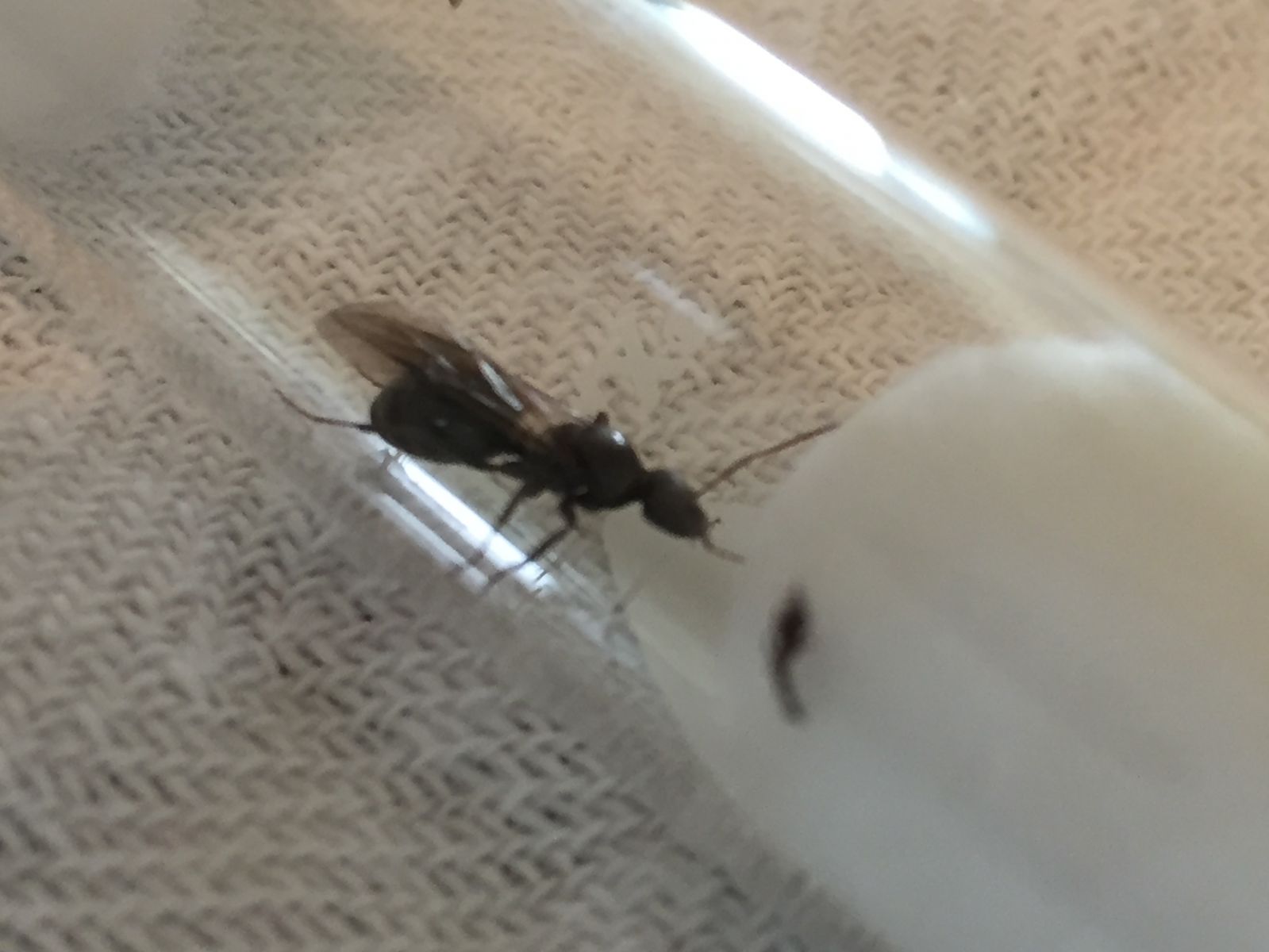
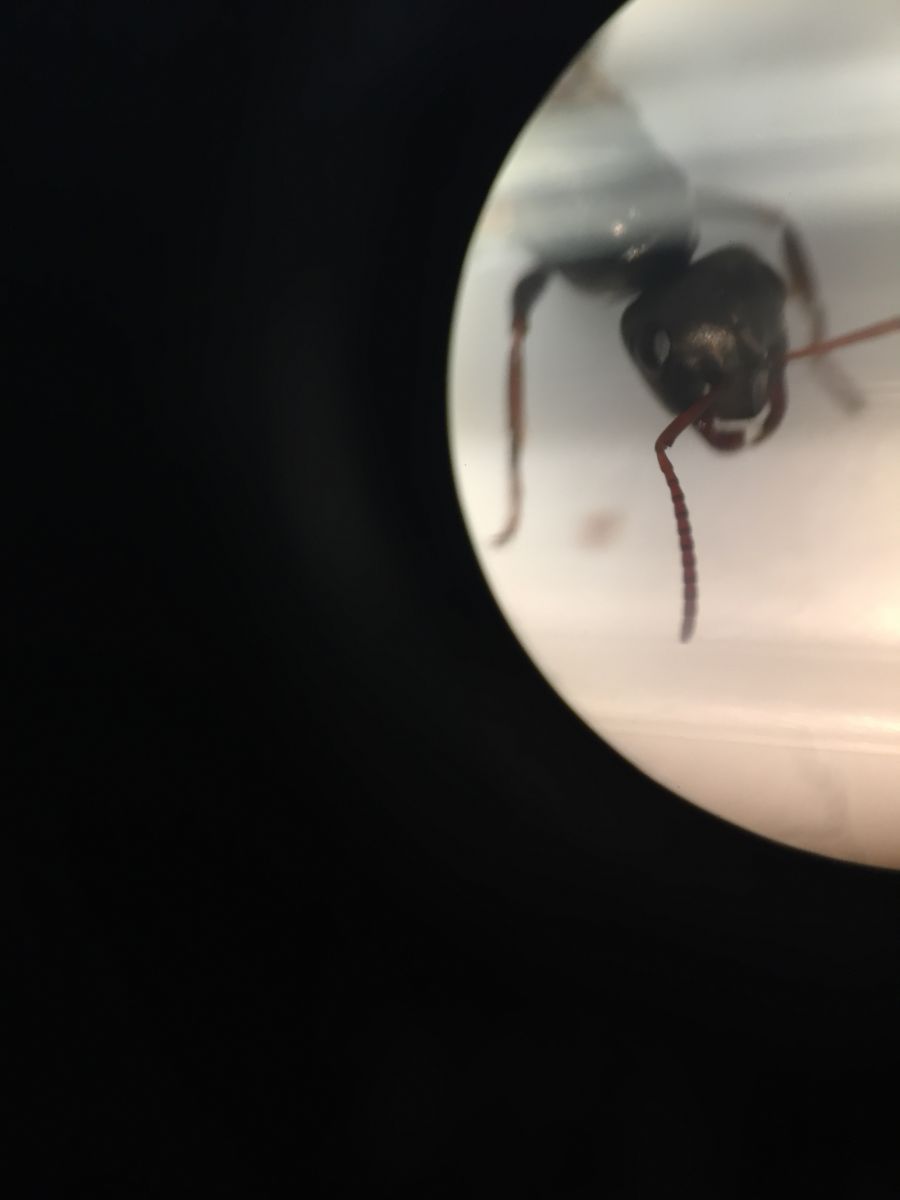
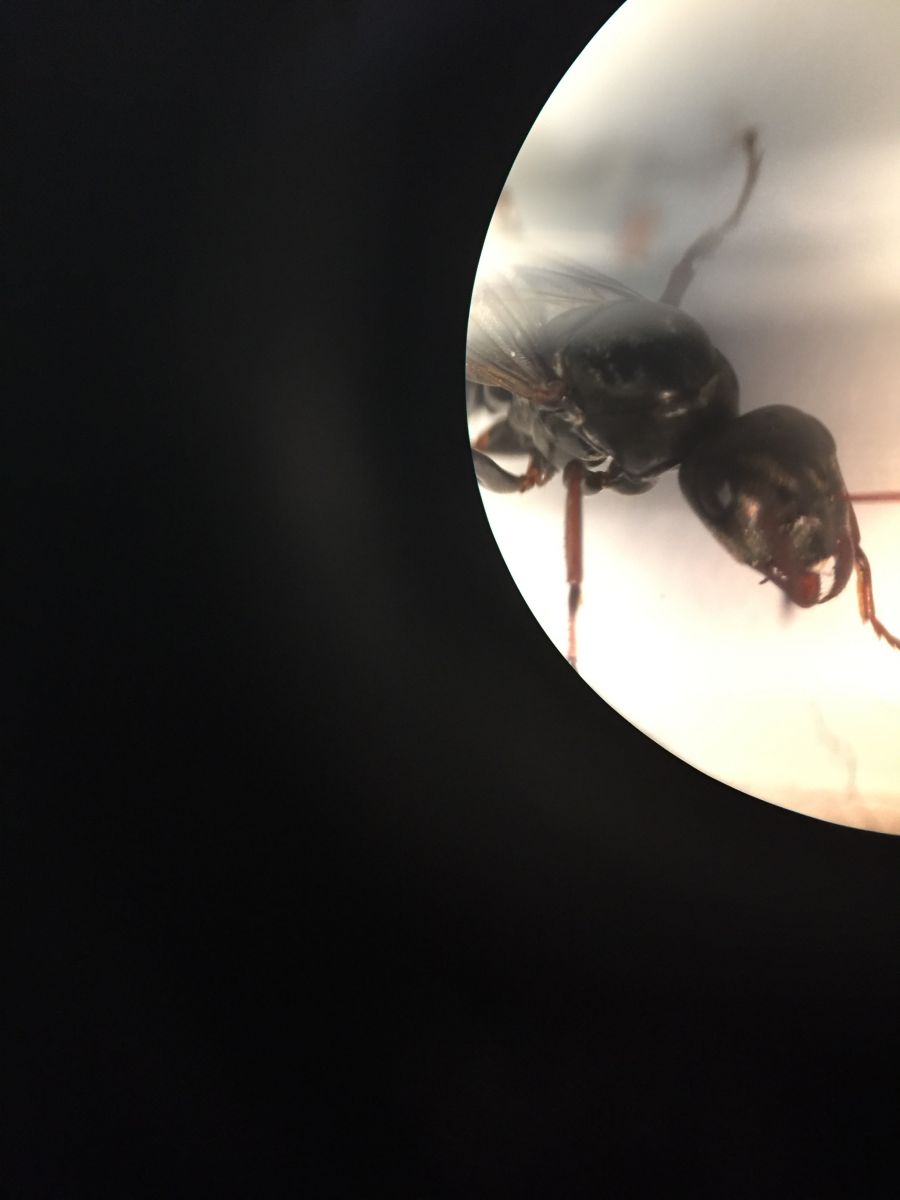
Thank You
Russell






